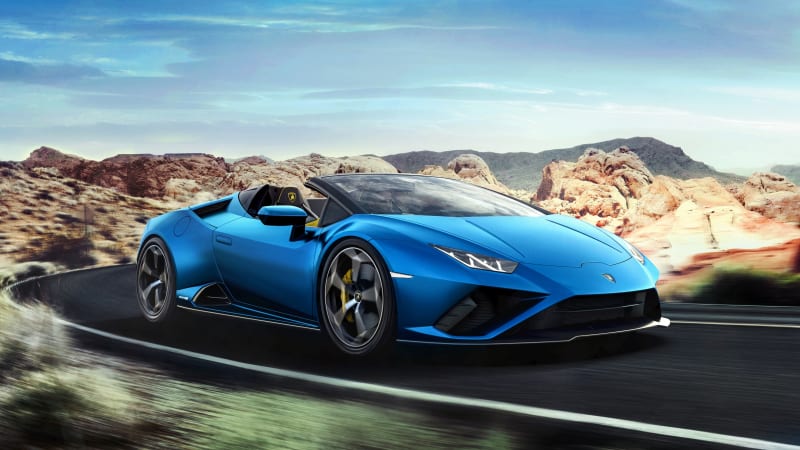Lamborghini turns the Huracán EVO into a tail-wagging rear-wheel-drive roadster
https://ift.tt/2WEmuKc

The latest evolution of the Lamborghini Huracán Evo loses its top and its front axle to deliver a wind-in-your-hair driving experience whether it’s going forward or sideways. The company proudly explained the newest addition to its line-up relies on hardware — not software — to make driving as engaging and thrilling as possible.
Lamborghini added Amazon Alexa integration to the Huracán earlier in 2020, but there’s no guarantee the digital assistant will hear your voice commands when you’re driving flat-out with the roof down. The two passengers sit low in the Huracán, and they’re merely inches away from a naturally-aspirated, 5.2-liter V10 that screams and shouts as it develops 610 horsepower at 8,000 rpm and 413 pound-feet of torque at 6,500 rpm. These figures are a little bit lower than the ones posted by the 10-cylinder when it powers the all-wheel drive Huracán Evo.
The rev-happy V10 spins the rear wheels via a seven-speed dual-clutch automatic transmission that’s quick when it needs to be, and docile when the occasion calls for it. Hitting 62 mph from a stop takes 3.5 seconds, meaning it’s there before you’ve reached the end of this sentence, and its top speed checks in at 201 mph.
Lamborghini re-tuned the Performance Traction Control System (P-TCS) to give the driver as much grip as possible in a wide variety of situations. If you don’t want grip, however, the Huracán Evo is more than happy to go sideways thanks to clever, gyroscope-based technology that allows its rear end to break loose and limits the engine’s torque output if it detects the oversteer angle crosses a pre-determined threshold. This function works when the driver selects Sport mode using a steering wheel-mounted switch; it’s off in Strada (or street) mode.
Even supercar manufacturers need to inject a generous dose of connectivity into their cars, and Lamborghini is no exception. There’s an 8.4-inch touchscreen in the center stack that displays an infotainment system the firm developed in-house. It allows the front passengers to browse the internet on-the-go, make hands-free phone calls, and load Apple CarPlay. Android Auto isn’t available, so motorists without an Apple device are out of luck.
The 3,326-pound rear-wheel drive model stands out from its all-wheel drive counterpart thanks to model-specific front and rear ends shared with the hardtop variant. Lowering or raising its power-operated soft top takes 17 seconds, even at speeds of up to 30 mph. The rear window can be lowered to better hear the V10, too.
On sale now, the Lamborghini Huracán Evo Rear-Wheel Drive Spyder (yes, that’s its full name) carries a base price of $229,428 in the United States before taxes enter the equation. Deliveries will begin in the summer of 2020. Enthusiasts can work directly with Lamborghini’s Ad Personam program to personalize their car.
Lamborghini resumed production in its historic Sant’Agata Bolognese, Italy, factory after a brief coronavirus-related hiatus, and 2020 is nonetheless going to be a busy year for the firm. It’s preparing to introduce a track-only, V12-powered supercar with 830 horsepower on tap, and it told Autoblog it will take the Urus — its only SUV — racing before the end of the year. Meanwhile, another team within its research and development department is busily working on a gasoline-electric plug-in hybrid variant of the Urus due out sooner rather than later.
Related Video:
Auto Blog
via Autoblog https://ift.tt/1afPJWx
May 7, 2020 at 09:15AM
